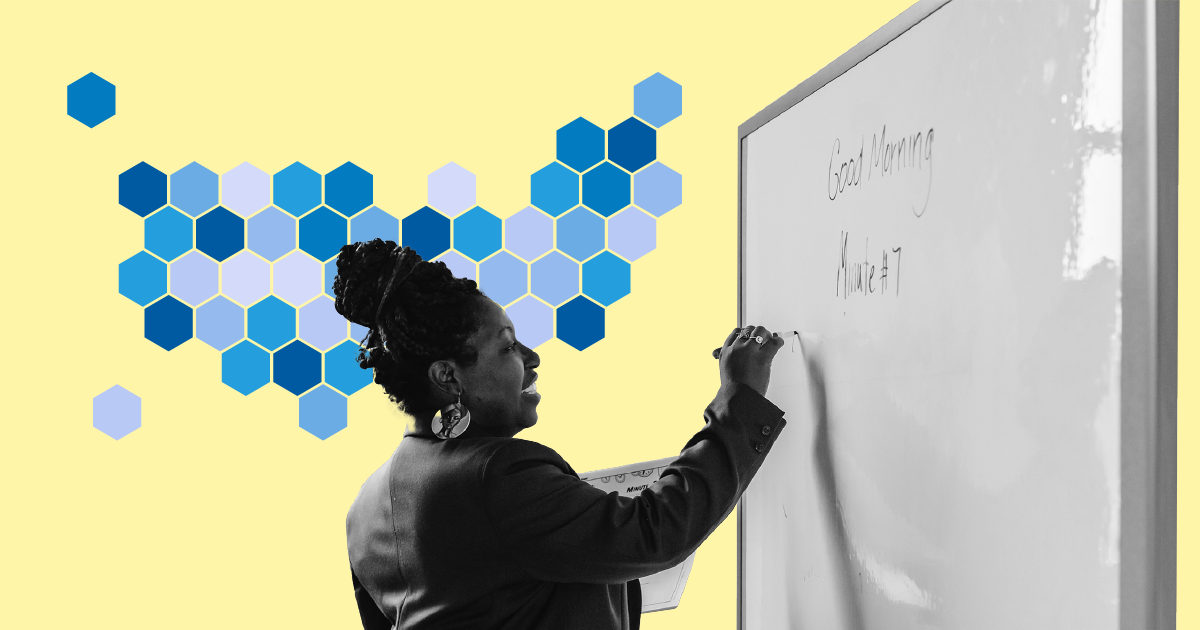Education
Which states pay teachers the most and least?

More than ever, Americans rely on the internet in their daily lives. According to the Federal Communications Commission (FCC), the number of internet downloads increased by 26.6% between 2020 and 2021, while uploads grew by 49%[1].
With the increase in usage, connecting to the internet by itself isn’t sufficient for many key parts of the digital world. A high-speed or broadband internet connection is essential for tasks such as remote work, online learning opportunities, or telehealth options. But over 10 million Americans lacked sufficient access to high-speed internet in 2021, according to government data.
Americans can receive fixed broadband[2] through five types of internet access: satellite connection, asymmetric digital subscriber lines or ADSL, cable, fiber, or wireless broadband.
Satellites can provide broadband internet access although they typically have lower upload and download speeds than other technologies.
Asymmetric digital subscriber lines, also known as ADSL, provide constant connection through existing copper telephone wires.
Cable internet runs through television cable lines, providing a wider range of speeds.
Fiber broadband connectivity runs through special glass cables, making it the fastest technology available to date.
Wireless broadband is typically used in isolated or underserved areas. Households and businesses using wireless technology must be located within 10 miles of an internet access point and have receivers that access the internet without cables. This technology uses a farther-reaching connection than wireless networks used in homes and businesses.
A cellular or mobile connection isn’t considered a fixed broadband internet source by the FCC. In a 2021 survey on internet usage, the National Telecommunications and Information Administration found the number of Americans with a mobile data plan increased from about 64% in 2015 to about 74% in 2021.
As of 2015, the FCC considers a fixed internet connection with at least 25 megabits per second (Mbps) for downloads and 3 Mbps for uploads as high-speed broadband.
But broadband access can depend greatly on where someone lives and how much it costs for the service.
For example, a family living in rural Alaska may have access to the high-speed internet, but it may only be possible through wireless broadband, which generally does not support higher speeds than other technologies such as cable or fiber.
This is why the FCC measures broadband access by counting the number of people with at least three broadband providers. Having multiple providers can offer customers a choice in which internet technology they use and can reduce prices through competition.
In 2020, the Broadband Deployment Accuracy and Technological Availability Act created a data task force to more accurately identify which areas of the country have access to high-speed internet.
In June 2021, the data showed that 99.2% of Americans had access to at least one high-speed internet provider. About 97% had access to at least three internet providers. A small percentage – less than one million people in total – did not have access to any provider[3].
Last year, the FCC considered changing the definition of broadband to 100 Mbps of download and 10 Mbps of upload speed. The commission decided against the change, citing concerns over whether enough providers could meet that standard, which would reduce competition.
The percentage of people with at least three providers decreases from about 97% with the current broadband definition to 29% when using the definition rejected by the FCC.
Rural areas had a lower coverage rate than urban regions when using both the existing FCC broadband definition and the rejected 100 Mbps benchmark. While access to at least one provider is almost equal, 91% of rural Americans had access to three or more providers, compared with 99% of those living in urban areas.
The difference in broadband access between rural and urban areas is at its lowest ever. As recently as 2015, less than half of Americans in rural areas had access to high-speed internet providers.
Tribal regions also have lower broadband access than their nontribal counterparts. Under current FCC benchmarks, 88% of people in tribal areas were able to get internet from at least three providers, 10 percentage points less than people living in nontribal areas.
One factor that contributes to the difference in broadband access in rural and tribal areas is the cost required to install cables. The FCC estimates each mile of fiber cable costs $27,000 on average to install. Rural and tribal areas may be in mountainous regions or areas with low population density, which requires more cable to reach each household.
To learn more about internet access, read USAFacts’ breakdown of technology access during the pandemic and get the facts every week by signing up for our newsletter.
Nearly 1% were not counted by the FCC, so their access to high-speed internet providers is unknown.
Broadband, or high-speed internet access, allows users to access the internet and internet-related services at significantly higher speeds than those available through "dial-up" services. Fixed broadband refers to internet provided to individual residences.
Download speed is the speed of getting information from the web to a computer, and upload speed is the reverse.
Newsletter
Keep up with the latest data and most popular content.